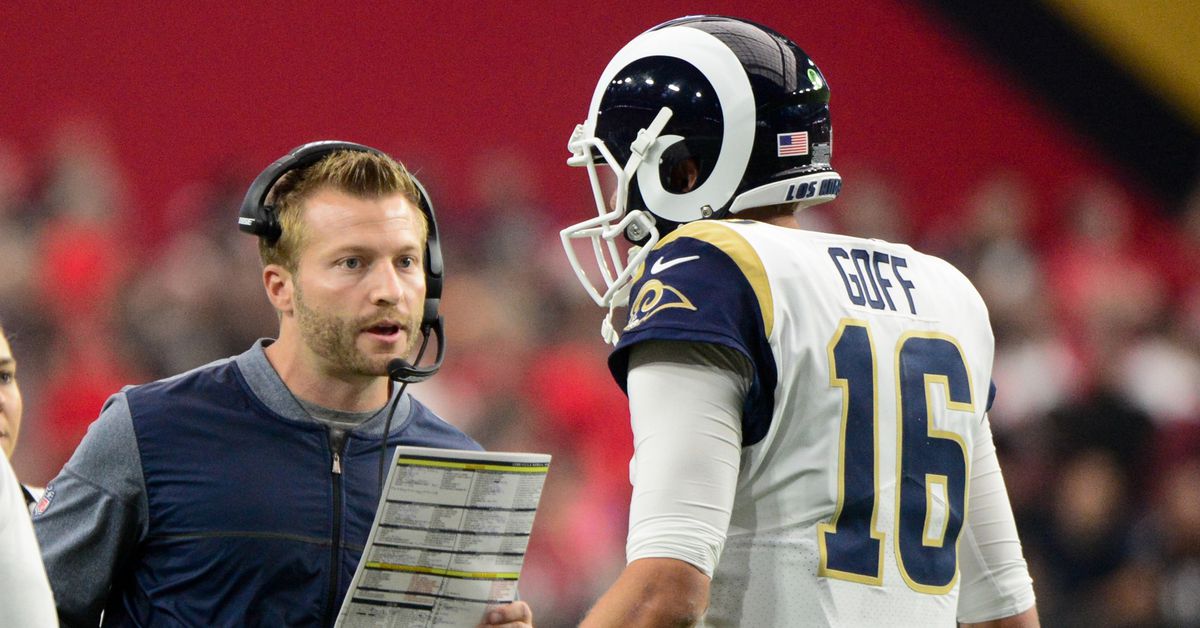We’re partnering with Football Outsiders again this year to promote the release of the Football Outsiders Almanac 2018. FO continues to raise the bar for quantitative analysis, and the 2018 almanac is proof positive. In our five-part preview, we’ll look at how they modeled the 2017 Los Angeles Rams and what they’re looking at for 2018 with FO’s Bryan Knowles (@BryKno).
How does FO account for something like the 2017 Los Angeles Rams’ offense? How is possible to project for (a) the springboard effect afforded the Rams by having set up the roster well albeit being poorly coached by Head Coach Jeff Fisher’s staff and (b) the combination of a new coaching staff (yes, more capable, but perhaps that can be put aside) with key personnel changes? As anomalous as that is, how do you guys even attempt to build it into your models?
Before they rested their starters in Week 17, the Rams had the biggest year-to-year turnaround we have ever seen, going back to 1987. That’s true both on offense and overall. Jared Goff doubled the previous record for biggest turnaround by a quarterback. Any time you get massive jumps like that, any statistical model is going to start screaming about regression
A big chunk of the Rams’ chapter in Football Outsiders Almanac 2018 talks about what you call the “springboard effect”, and we call the “Plexiglass Principle”. Basically, when you see teams make these massive season-to-season jumps, two things are generally happening. They saw a massive jump in their skill – better players, better schemes, better playcalling. That’s replicable, and helps tell us what a team is going to be like going forward. They also, however, usually saw a big jump in their luck. 16 games is a really small sample size, and usually those big jumps are accompanied by things outside of a team’s control; better health, better luck on turnovers, easier schedule, and so on. That’s not replicable, and tends to go back to average. When we see teams with a big jump like the Rams, the model is usually going to give them a healthy dose of regression back towards average; better than they were two years ago, but not as good as they were last year.
All that being said, the Rams don’t drop nearly as much as a normal team would. The jump from Fisher to McVay may go down as one of the greatest coaching upgrades in history, and we’ve found that teams that see a big jump when adding a new coaching staff keep more of those gains than other teams. We’ve also found that when big offensive jumps come with a new quarterback, like Jared Goff, they tend to be stickier as well. Teams like the Rams, with new coaches and quarterbacks, see their DVOA drop about 5% after one of those big bounce years. Teams that saw these big upgrades without new coaches and quarterbacks drop about 17%. That’s why we still project the Rams with the 11th-best offense in 2018; not quite as high as they managed a year ago, but a lot higher than the model would spit out if this was still a Fisher team.
